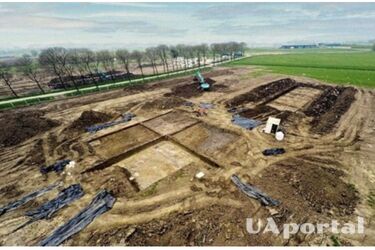A 4000-year-old sanctuary found in the Netherlands: it has a clear orientation to the solar system

Near the town of Til, 70 kilometers east of Rotterdam, archaeologists discovered several Bronze Age mounds. Upon closer examination, it turned out that they belonged to a large complex. Scientists have now reported the discovery of a sanctuary or ceremonial complex.
Phys.org writes about it.
The mounds are located on an area the size of three football fields, surrounded by ditches and connected by paths with wooden posts along the edges.
Several of the mounds contained burials, but most of them do not, and were intended for ceremonies. Carbon-14 dating has determined that the main part of the sanctuary was built four thousand years ago.
The complex has similarities with Stonehenge: its elements are clearly oriented toward the Sun, planets, and stars. The complex could have been created both for ritual purposes and for practical purposes for Bronze Age Europeans.
The researchers learned that the main place for ceremonies was the largest mound in the center of the complex. It was equipped with a solar calendar that could be used to calculate the days of harvest and other important seasonal events. According to scholars, the calendar consisted of two parts.
The first was the pillars around the mound. Being at one point on the top of the mound, a person could compare the position of the Sun in the sky with the marker pillars and find out how much time was left until the end or beginning of the season.
As a reminder, the remains of a 400-year-old ship were found in Mexico.
If you want to get the latest news about the war and events in Ukraine, subscribe to our Telegram channel!
